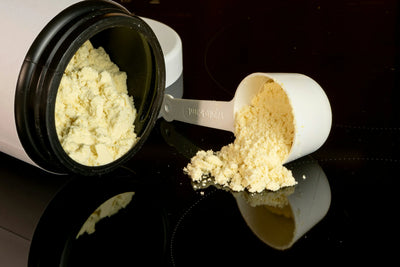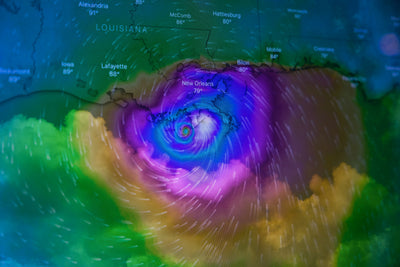Introduction
When you find your beloved dog suddenly vomiting, with shocking traces of blood on the floor, or his poop taking on an unusual color of bright red or black, it's a heartbreaking feeling like a punch in the chest.Hemorrhagic Gastroenteritis is an acute and serious gastrointestinal disease in dogs that often catches pet owners off guard. It comes on fast and the symptoms are severe, with vomiting and bloody diarrhea sweeping in like a storm, leaving you both panicked and helpless.
Hemorrhagic Gastroenteritis in Dogs: Emergency Protocol & Survival Rates
At 3:00 a.m., I was suddenly awakened by the sound of vomiting. Turn on the light and there is a puddle of blood-colored vomit on the floor. Your heart is instantly ripped out of your chest when you pick up your dog's frail body and find him slack-eyed and pale gummed - the first act of hemorrhagic gastroenteritis (HGE), the number one killer of sudden canine death. At this moment, death is one step away from your fur child, and your judgment will rewrite the ending.

1. The Golden Hour of Life-Saving: A Practical Guide to Emergency Management
Points to recognize the moment of life and death
When your dog develops strawberry jam-colored bloody diarrhea, projectile vomiting, or even spitting up a coffee grounds-like substance - don't hesitate! This is no ordinary case of eating a bad stomach. On the way to the veterinary hospital, you can gently touch your dog's gums: normally they should be moist and pink, and the pallor should return to blood within 2 seconds of pressure. If no blood returns for more than 3 seconds, it means he's in deep blood volume collapse.
As the ambulance whizzes along, you need to keep recording: does it have a huddled position with severe abdominal pain? Are the breaths rapid and weak? These are the details that will allow the veterinarian to make the most time-critical dash to the clinic.
The hospital's life-and-death battle
When the blinding white light of the consulting room comes on, the veterinarian will start a systematic program to fight against death:
Vascular defense: rapid establishment of intravenous access, potent balancing fluids (e.g., modified Ringer's solution) are like rapids after a long drought, flushing the parched vascular desert, and a volume of at least 60-90 ml of fluids per kilogram of body weight is needed to reverse the shock.
Infection deterrent: Antibiotics such as enrofloxacin become a moat, even though the cause of HGE has not yet been locked in, they are sufficient to block the threat of sepsis that is stalking the country.
Gastrointestinal Truce Plan: Ondansetron injections strongly blocked the vomiting reflex, allowing the spastic digestive tract to breathe, and then aluminum thioglycollate was used to form a protective barrier for the gastric mucosa.
Nutritional Precision Reconstruction: After the vomiting stops for 24 hours, warm low-fat chicken and pumpkin puree is fed from 5ml per kilogram to gently restart the digestive system like a baby's first taste of the world.
2. The Truth Behind Survival Rates
The parameters that determine life and death
Outside the operating room, the veterinarian tells us that the survival rate is 95%. But behind this figure lie key parameters: if you intervene in time before dehydration exceeds 10% (as evidenced by Dry Skin and slow skin rebound); if the erythrocyte pressure product test hasn't yet spiked above 60% (normal dogs are only 37-55%), when plasma is as good as a dry riverbed; and if you cross the threshold of the clinic within 4 hours of the onset of symptoms.
When the specter of shock has loomed (cyanosis of the mucous membranes, a weak pulse), or diffuse intravascular coagulation (DIC) with coagulation collapse, or systemic organ failure, the probability of survival slips instantly into the abyss.
Reefs of life after survival
Even if the dog survives the 72-hour scare and is discharged home, about 15% of patients will experience a sudden recurrence of HGE when the sun returns. This is especially true for puppies less than 2 years of age and senior dogs over 7 years of age, who have an even bigger breach lurking beneath their immune defenses. The care plan you have in hand at this point will determine whether it is a step towards complete recovery or a descent into relapse hell.
3. Rehabilitation: Rebuilding the Immune Wall
The 28-day consolidation period after discharge from the hospital
The first few days of bringing your furry child home are crucial:
Dietary reconstruction project: special intestinal prescription food replaces home cooked food, stepwise recovery from liquid to soft food, single serving compressed to 1/3 of what it used to be, precision feeding 4-6 times a day, guarding the weakened gut with calorie density.
Medication precision management: antibiotics need to complete a full course, intestinal mucosal repair agents such as glutamine to continuously feed the injured intestinal wall cells.
Environmental Stress Blocker: Putting clothing with your scent on his side, playing soothing frequency music designed for canines, eliminating visitors while he lounges - these details build an invisible immune fortress.
Lifelong Defense Strategy
In the long run, regular monitoring of feces for hidden bugs, using scientifically formulated commercial staple foods to avoid the minefield of high-risk homemade treats, and maintaining a steady rhythm of rest and relaxation are the keys to shutting the door on HGE once and for all. Consider annual medical checkups as necessary life insurance: the albumin value in the biochemical indicators is a barometer of intestinal health; the lurking inflamed intestinal wall in the abdominal ultrasound image will be invisible under professional equipment.
A nighttime emergency, a Keji named “Lele” continued to blood stools sent to the rescue. The red blood cell pressure had reached a dangerous value of 68%, and after three days and nights of non-stop liquid therapy, it finally shook its head and bit the corner of its owner's coat. A month later, when he returned to visit, the owner showed a carefully made record sheet of the recovery meals - where the scientific attitude of reverence for life is condensed, but also poured into the deep bond that transcends the species.
Remember, when blood flashes in your dog's vomit in the early hours of the morning, every minute you fight for is a minute you're not fighting for!
Dog Puking and Pooping Blood? 3 Critical Next Steps
At three in the morning, the pungent smell of rust wakes you from your sleep - the bloody plums blooming on the floor, the sticky blood dripping from your dog's mouth, the bright red trails trailing from his hind limbs, all proclaim that a ferocious battle to defend his survival has been fought. This is by no means ordinary indigestion, but death is knocking on the door of the bell.
Countdown to Death: The 60-Minute Golden Operation Manual
First Step: Freeze the Scene with Forensic Precision
Your cell phone camera will be a life-saving weapon as blood-colored liquid gushes from your dog's mouth and nose:
A frozen time sample: save vomit with blood clots in a plastic bag, bright red wine stains point to esophageal lacerations, and coffee grounds-like sediment reveals a rancid gastric ulcer
The code book of feces: strawberry-colored loose stools sprayed on tiles suggest that the small intestine is being ravaged by HGE (Hemorrhagic Gastroenteritis); foul-smelling black stools in the form of coal tar warn of insidious duodenal hemorrhage.
Vital signs in code: probe fingertips into its armpits - skin rebound time of more than 3 seconds, is a warning of severe dehydration; gums from pink to tombstone gray, shock is knocking at the door!

Life and Death Step 2: Initiate a Digestive Tract Dormancy Program
In the speeding car on the way to the veterinary hospital:
Take away all food and water bowls immediately, even if the look in his eyes breaks your heart.
Apply a cold, damp washcloth to the abdomen to cool the burning insides.
Stick a thermometer in the anus: a reading of over 39.5°C is the eye of the storm of systemic inflammation.
Emergency finish line sprint: assembling a life-saving intelligence package
Before crashing through the ER doors, ensure your backpack has:
✅ A bloodstained vomit/fecal sample
✅ Record of meals over the last three days (half a steak? ✅ Chicken bones from the trash?)
✅ A clear, close-up video of the bleeding area on your cell phone
✅ List of medications ever taken (Ibuprofen is highly toxic to dogs!)
Map of the Hidden Killer Behind the Blood
When a veterinarian's x-ray machine penetrates the flesh, the truth that may be revealed is chilling:
| Weapon Type | High - Risk Warning Signs | Survival Window |
|---|---|---|
| Deadly chicken bones | Sudden shrill screams | < 6 hours |
| Parvovirus | Projectile, tomato - colored, foul - smelling diarrhea | < 48 hours |
| Hemostasis failure | Subcutaneous purpura and ecchymosis | < 72 hours |
| Malignant tumor | Long - term positive occult blood in stool | Staging determines life and death |
Vigilante's Note: The Life Rebuilding Project After Hospital Discharge
When the dog comes home hooked up to the infusion pump, the real battle has just begun:
The Digestive Tract Reboot Program
Days 1-3: Feed 5ml of prescription enteral nutritional cream every hour, as if applying a dressing to a burn wound
Days 4-7: use a wall-breaker to beat chicken breast + pumpkin + rice paste into an atomic level stream, micro-dosing 12 times a day
Day 14 milestone: when feces finally form a dark brown solid, tearfully destroy emergency cleaning kits
Laws of the battlefield for environmental disinfection

UV lamps sweep vomit-contaminated areas nightly
Spray carpets with 84 sanitizer diluted 1:30
Steam sterilize and baptize all eating utensils
On one stormy night emergency, a golden retriever suffered an intestinal perforation from stealing a grilled chicken rack. A sample of bloody vomit collected by the owner on the way to the hospital allowed the veterinarian to lock in a surgical plan within 10 minutes. Three weeks later, the 15-centimeter-long intestinal anastomosis scar had become a treasured photo on the owner's cell phone, called the “Medal of Rebirth”.
Your calmness is the only way to get across the river of blood on the floor. Those blood-colored samples sealed in plastic bags, the minute-by-minute signs recorded on the cell phone, and the streetlights whistling by as you run to the hospital - all are silently proclaiming: the life defense forged by love and professionalism will eventually resist the scythe of death.
Is Hemorrhagic Gastroenteritis in Dogs Contagious?
As a pet owner who loves my furkids, or a former “comrade-in-arms” who has fought alongside my dogs, I know what it's like to watch them suffer and not be able to do anything about it. Don't panic! Here are three key steps to help you stay calm and keep your furkids healthy.
Step 1: Quickly Recognize HGE and Take Immediate Action
HGE isn't like ordinary indigestion, it's a gastrointestinal “storm”. Your dog may vomit suddenly, throwing up liquid with bright red or coffee-colored residue; stools may be watery, with bright red blood or dark red like black tar. This condition is most often seen in small to medium-sized dogs, such as miniature schnauzers, poodles or Yorkies, but any dog can be struck. Symptoms usually worsen rapidly within a few hours, accompanied by depression, loss of appetite, and even signs of dehydration (e.g. sunken eye sockets, sticky gums).
Action Points:
Stop feeding immediately: Stop all solid food intake for 12-24 hours for adults and 8-12 hours for puppies. This is not to “starve” them, but to give the damaged gut a chance to catch its breath.
Watch for signs of dehydration: Check to see if your dog's gums are moist and how elastic his skin is (gently pinch the skin on the neck to see if it springs back quickly). If you find an abnormality, be ready to move on to the next step right away.
Record the details of the symptoms: take photos of the vomit and feces with your cell phone, and record when the symptoms started, how often they occurred, and the dog's mental state. This information is vital to the veterinarian's diagnosis.
Case in point: A pet owner named Xiao Li noticed her Corgi “DouDou” vomiting blood in the early hours of the morning and her feces were black. She quickly took photos, contacted a 24-hour emergency veterinarian, and suspended feeding and provided only a small amount of water for six hours while she waited for medical attention. The veterinarian quickly confirmed the diagnosis of HGE based on the photos and description, and prompt treatment allowed DouDou to recover within 72 hours.
Step 2: Seek Emergency Medical Attention, Professional Treatment is a Lifeline
The danger of HGE is that it can lead to rapid dehydration and even shock. If your dog is experiencing any of the following “red alerts,” get to the vet as fast as you can:
Vomiting and diarrhea that lasts more than 12 hours (puppies) or 24 hours (adult dogs).
Bright red or black feces with a foul odor.
Body temperature exceeds 39.5°C, or the dog is visibly weak and lethargic.
Suspected swallowing of foreign objects (e.g. toy pieces, bones).
Prepare for medical attention:
Bring key evidence: Bring a sample of vomit or feces (sealed and refrigerated in a plastic bag), as well as a record and video of your symptoms. This “evidence” will help your veterinarian shorten the diagnostic time and may save a valuable window of opportunity to save your dog.
Describe the history: Tell your doctor about recent changes in your dog's diet, if he has been exposed to another dog's feces, if he has been outside, or if he has eaten anything unusual. For example, has the dog stolen dangerous foods such as chocolate or grapes?
TRUST THE PROFESSIONAL: Treatment for HGE usually includes intravenous rehydration, antibiotics, anti-inflammatory medications, and anti-emetics. In severe cases, the dog may need to be hospitalized for observation. Do not try to self-medicate with human medications (e.g., antidiarrheal medications), as this may aggravate the condition.
Case in point: The owner of a Golden Retriever, “Wang Cai”, found that he was vomiting blood continuously and his feces were as red as strawberry jam. Luckily, he brought a stool sample to the hospital, and the veterinarian tested the sample and found that the HGE was caused by a bacterial infection. Prompt treatment with fluids and antibiotics allowed Wang Cai to come back to life on the 5th day.
Step 3: Preventing HGE to Protect Your Furry Child's Future
HGE is scary, but the risk of occurrence can be greatly reduced through scientific prevention. Many pet owners, after experiencing an HGE scare, ask, “Is this disease contagious? How can I avoid it happening again?” The good news is that HGE is not usually highly contagious and is not spread from dog to dog as easily as distemper or microvirus. However, vomit and feces from sick dogs can carry the pathogen, and a little carelessness in a multi-dog household or kennel can cause problems.
Key to prevention:
Keep the environment clean: promptly clean up dog vomit and feces, and clean floors, food bowls and toys with a pet-safe disinfectant. Check that your dog has not come into contact with another animal's feces after each outing to walk your dog, and clean paws promptly.
Dietary management: Avoid sudden changes in dog food and gradually transition to new food (7-10 days of gradual mixing is recommended). Do not feed human food, especially greasy, spicy or lactose-containing food (e.g. milk), which may irritate the stomach and intestines.
Regular checkups: Take your dog for a full physical exam once a year to check for intestinal health and potential infections. Vaccinations and deworming can also reduce the triggers of HGE.
Isolate suspected sick dogs: if there are other dogs in the house, dogs showing symptoms of HGE should be isolated immediately, with separate food and water bowls, until a veterinarian confirms it is safe to do so.

Common Misconceptions:
Misconception that HGE is highly contagious: While HGE is not as contagious as viral diseases, neglecting hygiene can lead to bacterial or parasitic infections in other dogs. Stay vigilant but there is no need to panic unduly.
Random medication: Some owners give their dogs human antidiarrheal medication when they see bloody stools, which can mask the symptoms and delay treatment; HGE requires a professional diagnosis, so don't “take matters into your own hands”.
Case in point: After the first dog was diagnosed with HGE, an owner of two Pomeranians immediately quarantined the other dog and cleaned the environment with a diluted pet disinfectant every day. As a result, the second dog came out unscathed, proving the importance of preventative measures.
When you see your dog curled up in a corner in pain, with vomit and bloody poop staining the floor, the moment of panic may leave you at your wits' end. But remember, your calmness and decisiveness are the strongest thing they can rely on.HGE may come on strong, but with quick recognition of symptoms, urgent medical attention and scientific prevention, most dogs can get through it and regain their old energy.
Keep this guide taped to your refrigerator door or in a cell phone memo. It's a “playbook” for you and your furkid when a crisis strikes. Check your family's first aid kit now, and keep your pet's electrolyte powder and clean sample containers on hand. May your furkid stay healthy and may you enjoy many more sunny dog walks together!





